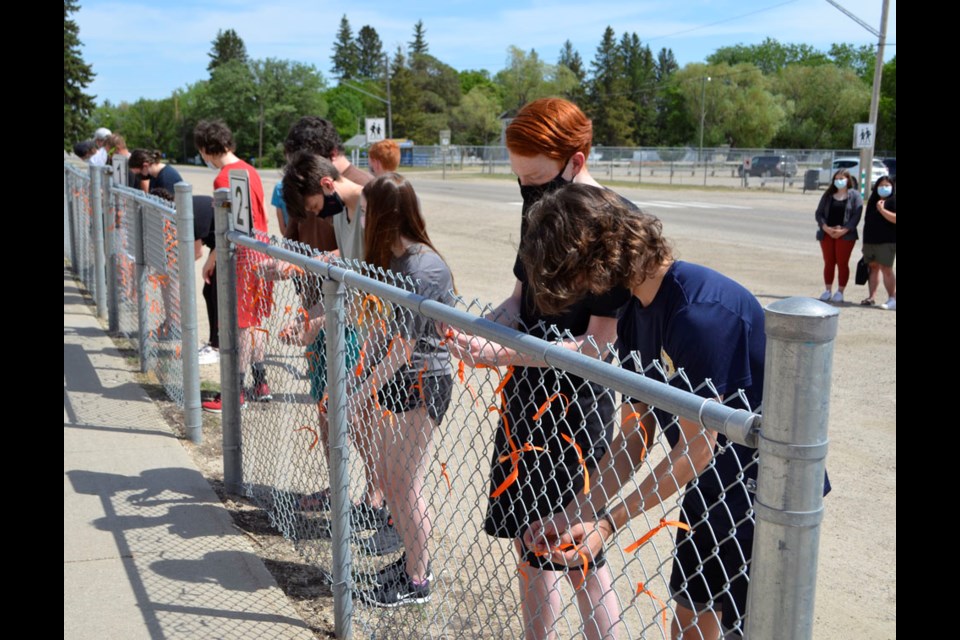On June 4, Virden Collegiate Institute (VCI) Grade 9 and 10 students assembled in the school’s outdoor classroom for a brief ceremony in recognition of the 215 children whose bodies were recently discovered buried at the site of the former Indian Residential School in Kamloops, B.C.
“Today we stand in solidarity and reconciliation with all the families of these indigenous children who attended Indian Residential School,” said Tricia Hayward, a VCI teacher who organized and led the memorial. “We remember the 215 undocumented indigenous children who lost their lives at Kamloops Indian Residential School, and the many more young lives yet to be discovered. What we are doing here is a small step towards reconciliation that the atrocities of Canada's past cannot be forgotten, and we must continue to bring awareness and justice for all Indigenous people in Canada against the policies of oppression that have been put in place by our government. When remembering the survivors of Indian Residential Schools, it is important to understand that a survivor of a complex trauma may not even understand why they are traumatized because there wasn't one single major event that resulted in trauma, but rather it was their normal.”
Hayward read a passage from Trailblazer In First Nations Education, a memoir penned by her great aunt, the late Doris Pratt. Pratt was a Sioux Valley Dakota Nation elder who attended residential school in Elkhorn and worked throughout her life preserving and teaching the Dakota Language.
Linda Eastman, who teaches students in Dakota at Virden Junior High School, spoke briefly and offered a prayer in her native tongue for the lives lost.
“I am a residential school survivor from the third generation because my late father attended residential school in Brandon and my grandpa as well,” she said.
Hayward’s colleague Jason Taylor assisted with the cultural aspects of the ceremony. He stood in the background singing and beating on a single drum while staff and students tied small orange ribbons to the fence along the front of the school as a symbol of remembrance.
“The song I sang was a straight honour song,” Taylor said. “We have songs for somebody who is graduating… for somebody who has passed away… as a remembrance song. We don't have a song specifically for bodies that have been found, like this. The traditional honour songs don't fit that, so we have to have a song that can be kind of a blanket song for this type of a situation.”
Afterwards, Hayward reflected on the importance of the exercise in helping students comprehend what transpired three provinces away but has had an impact right across the country.
“I think it's something that awareness needs to be brought to, and it's something that in our school we take seriously,” she said. “We always have Orange Shirt Day in September, and after the discovery of those 215 bodies in Kamloops it kind of rallied the whole country and our school felt that we needed to do something to recognize the atrocity. I have an indigenous heritage, so it was special to me as well.”




